
Balancing devices go by many names and styles: You got your classic Indo board—picture that oval board on a cylindrical rocker. You got the Bosu ball—you must have seen the light blue inflated half balls at your gym. And then there are offshoots in between. But they all serve a similar purpose—improving your stabilizing muscles and body awareness, the essential bond between body and mind. Not only are they really fun, but the best balance boards can also amp up exercises and movements you already do, training the core and stabilizing those ankles vital to so many sports.
That's what makes these a contender for some of the best home gym equipment. So we rounded up the top ten, from brand originals to newer models, as well as budget picks. And if you don't know where to begin, start at the end where we answer common questions and include a guide so you know what to look for.
While you're deliberating, check out all the workouts to go along with your board. While they're designed for runners, they're helpful for just about any sport.
Why Trust Us?
ACTIVE.com's editorial team relies on the knowledge and experience of fitness and wellness experts including competitive athletes, coaches, physical therapists, nutritionists, and certified trainers. This helps us ensure the products we feature are of the highest standard. Collectively, the team has spent countless hours researching equipment, gear, and recovery tools in order to create the most accurate, authentic content for our readers. Customer satisfaction is also a key part of our review process, which is why we only feature products that are highly rated.
The Best Balance Board - Our Top Picks
By clicking on the product links in this article, we may receive a commission fee at no cost to you, the reader. Sponsorships and affiliate commissions help support our research so we can help you find the best products. Read the full affiliate disclosure here.
- Best Overall: Rebalance 101V2
- Best on a Budget: Fitlaya Balance Board
- Best for Surfing: SI Boards Freestyle
- Best for Snowboarding: Vew-Do Flow Balance Board
- Best for Skateboarding: Indoboard
- Best for Kids: Wood City Wobble Board
- Best for Core Strength: Bosu Elite
- Best for Beginners: Yes4All Premium Bongo Board
- Best for Standing Desks: Rebalance Focus
- Most Versatile: Rebalance Fit
Best Overall Balance Board - Rebalance 101V2
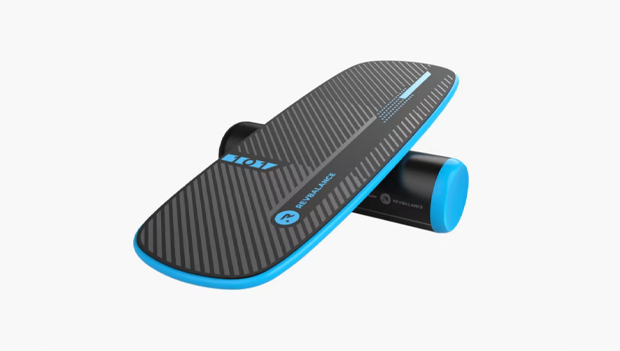
SPECS
- Material: Composite
- Dimensions: 30" x 12" x 1"
- Weight: Approx. 10 lbs.
- Weight capacity: 400 lbs.
If you're looking for a skateboard-style rolling board, RevBalance has upgraded their 101 model with a Durasoft grip top that "provides a cool, comfortable feel whether you're training inside or outside, with or without shoes." Its compact size and modern design mean it'll pack easily and store nicely. It's also just the size you need for a nice swing. We like the adjustable roller stops, which you can pop and lock to your desired roll distance. Or, take them out completely for full freedom.
What We Like
- A cushioned but not too cushioned surface with good grip
- Magnetic adjustable stops
- Comes with a digital guide
What We Don't Like
- Some may prefer classic wood and can do without the soft surface
- A bit pricey
BUY: Rebalance 101V2
Best Budget Balance Board - Fitlaya Balance Board
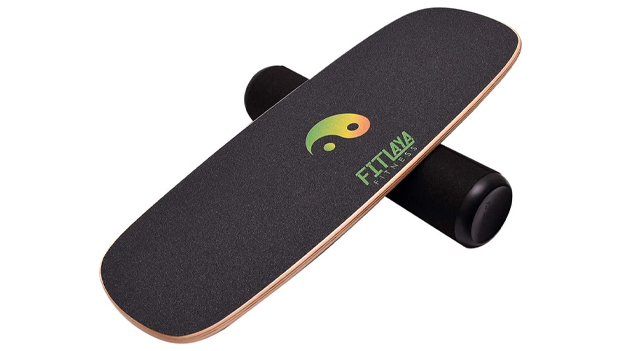
SPECS
- Material: Wood with a non-abrasive roller
- Dimensions: 17.8" x 4.5"
- Weight: About 10 lbs.
- Weight capacity: 350 lbs.
If you want to work your core, balance, and agility on a budget, check out the Fitlaya balance board, made of Canadian maple that can withstand 350 lbs and is covered in grip tape. Yes, you may want to wear shoes on this one but for the price, this board does everything an Indo board can. Plus, this board’s non-abrasive roller makes it ideal for the home or office.
What We Like
- Sturdy board on a budget
- Non-abrasive roller
- Ideal size
What We Don't Like
- The grip tape will turn off most barefoot boarders
- The roller can wear out rather fast
Best Balance Board for Surfing - SI Boards Freestyle Original

SPECS
- Material: Wood
- Dimensions: 36" x 18"
- Weight: About 12 lbs
- Weight Capacity: 400 lbs
When California-based trainer Elysia Tsai put her two decades of experience into developing a balance training system the result was the Freestyle Original, a bells-and-whistles take on the classic wooden surfer style. The difference? Rather than the cylindrical forward and back rollers you see out there, her board features a unique rail system that creates a seamless stopping edge all around which means you can tilt and roll in all directions for a true challenge.
On top of that, The SI board comes with a variety of balls, half balls, and resistance bands making up to 16 different setups. Whether you're training for an epic surf excursion or just want a kickass workout, you ought to give this one a ride.
What We Like
- Classic surfer-style board taken to the next level
- Multidirectional movement with edge-stopping protection in all directions
- Versatile ball and half-ball set
What We Don't Like
- Very expensive
- No cylindrical roller included
BUY: SI Boards Freestyle Original
Best Balance Board for Snowboarding - Vew-Do Flow Balance Board

SPECS
- Material: Wood
- Dimensions: 28" x 7"
- Weight: 7 lbs.
- Weight capacity: 450 lbs.
Designed and built in Salt Lake City, Utah, Vew-Do offers the classic skater-style balance board, only with added heel-to-toe challenge thanks to the unique hardwood roller designed with an angled taper, making for great maneuverability and minimal board-to-ground contact—just perfect for a snowboarder.
What We Like
- Angled taper for heel-to-toe action
- Compact size
- Moderately priced
What We Don't Like
- Either you're on the tapered angle or not; there's no in between
- A bit short to truly mimic a snowboard
BUY: Vew-Do Flow Balance Board
Best Balance Board for Skateboarding - Indo Board Original
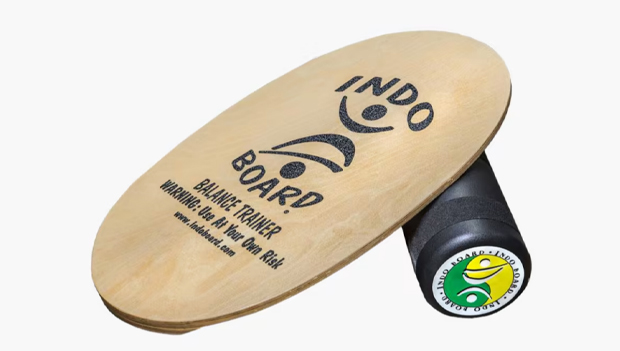
SPECS
- Material: Wood
- Dimensions: 30" x 18"
- Weight: 15 lbs.
- Weight capacity: 350 lbs.
The classic Indo board—the one that started it all. Surfer Hunter Joslin came up with the concept in the 1970s and since then, the Indo board got a swell of loving customers. What makes it great is its simplicity—it really is just an oval wooden board on a roller but it has a size many find perfect and it's free of grip tape so that's ideal for bare feet. If you want the classic front-to-back rocker, why not start with the one that started them all?
What We Like
- THE Original
- Simple, durable, and timeless design
- Durable, non-abrasive roller
What We Don't Like
- You pay for the name
- The size is a bit small if you're seeking a lot of mobility
BUY: Indo Board Original
Best Balance Board for Kids - Wood City Wobble Board
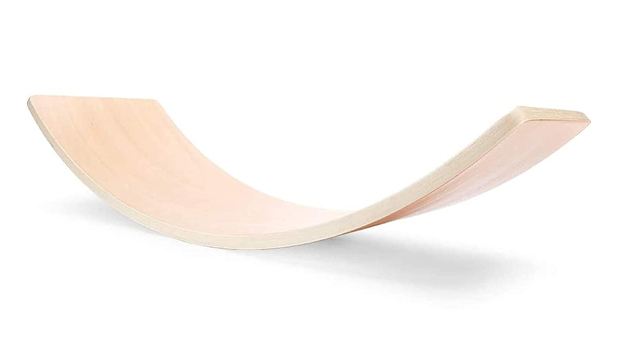
SPECS
- Material: Wood
- Dimensions: 31" x 12"
- Weight: About 10 lbs.
- Weight capacity: 480 lbs.
The Wood City Wobble Board is not actually a wobble board, by our definition—it's just a curved piece of wood, making it as simple and safe as can be. This style of balance board is perfect for kids to learn motor skills. They seem to teach themselves. What's more—they always find different ways to play with it. This toy could be a teeter-totter, a bridge, a slide, a rocker, a chair, or more.
What We Like
- It's a simple curved piece of wood—but it has so many uses
- Sturdy enough for adults, too
- Kids gravitate to it and learn naturally
What We Don't Like
- A bit pricey for a piece of wood
- Could use some flair or color options
Best Balance Board for Core Strength - Bosu Elite

SPECS
- Dimensions: 26" diameter, 8.5" tall
- Weight: 19 lbs.
- Weight capacity: 450 lbs.
If you've ever seen the classic blue half ball at your local gym, yep—that's a BOSU ball, a dynamic inflated workout device that works "Both Sides Up". "Built to create a stronger foundation," the Bosu Ball Elite utilizes a special high-density interior that pushes back harder the harder you push it. Whereas the original Bosu ball has a squishy instability that's sometimes called for, the Elite has a coil-like resistance you can feel, and it's revered especially in strength training for "priming" the nervous system for heavier lifts or explosive power. Regular sessions with this bad boy will make you a fleet-footed runner and sure-footed lifter.
Another unsung feature of the Elite is its totally flat base, unlocking certain dome-down (base-up) workouts. While the other models have slightly raised feet at the edges, this one opts for a uniform non-slip surface. Now you can stand on it freely, enabling some pretty intense feats—Balanced pistol squats anyone?
This thing isn't cheap. But if you're trying to hit muscle groups you couldn't name, you'll throw down for this one.
What We Like
- Coil-like, dynamic resistance
- 2-year warranty
- Primes the body for sure footed lifts or sprints
- Textured power zone and numbered resistance zones
- Access Bosu's online video library
What We Don't Like
- Expensive
- Some may miss the "give" of the original Bosu ball
BUY: Bosu Ball Elite
Best Balance Board for Beginners - Yes4All Premium Bongo Board

SPECS
- Material: Wood
- Dimensions: 30" x 11"
- Weight: Just under 10 lbs.
- Weight capacity: 350 lbs.
With three stopper adjustments, a low-to-the-ground roller, and a bit of friction on the underside of the board, beginners will have an easy time on the Yes4All Premium. The small size limits the range of motion as well, and it packs away nicely. The non-abrasive roller and padding will protect even hardwood floors from scuffs. And at its price, this one's a no-brainer if you just want to pick up the balancing act. And if you're wanting to take it up a notch, spread out those stoppers and get the 3-in-1 package that comes with a half-cylinder rocker and an inflatable half dome both suited to calisthenics.
What We Like
- Great price to try out a balance board
- Low center of gravity
- Easily adjustable stopper adjustments
What We Don't Like
- A bit small if you're looking for a surfing feel
- Advanced balancers may prefer a larger roller with more tilt
BUY: Yes4All Premium Bongo Board
Best Balance Board for Standing Desks - Rebalance Focus
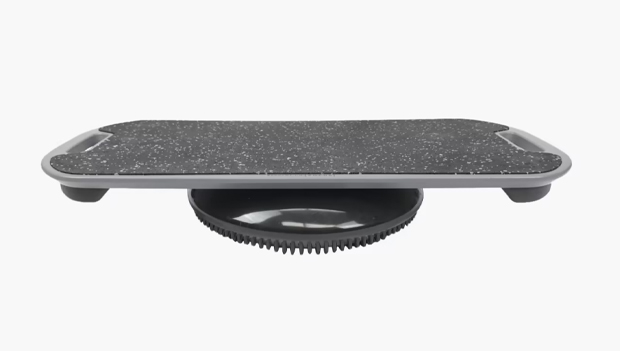
SPECS
- Material: Composite
- Dimensions: 27" x 14"
- Weight: About 9 lbs.
- Weight capacity: 450 lbs.
If you're chained to the nine-to-five grind, it's time to take a stand. Well, literally. Get this balance board for a mild, consistent challenge to keep you on your toes throughout the day. Simply add air to the cushion to increase the difficulty, from easy squish to firm and wobbly. It's stable and non-abrasive so it's safe on most surfaces. The top is non-slip and works even with dress shoes.
What We Like
- Works even with dress shoes
- Control difficulty with inflatable cushion
- Small and compact
What We Don't Like
- Not suitable for a proper workout
- Not versatile
BUY: Rebalance Focus
Most Versatile Balance Board - Rebalance Fit
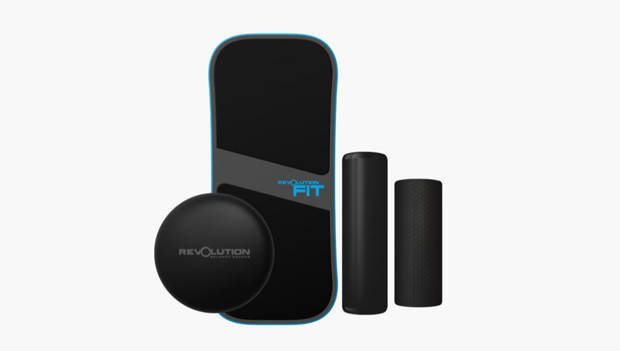
SPECS
- Material: Composite
- Dimensions: 32" x 14"
- Weight: About 14 lbs.
- Weight capacity: 450 lbs.
The Revbalance fit includes three different bases for three different feels—squishy cushion, smooth roller, and ribber roller. This makes the Fit a great buy for versatility, suitable to newcomer and pro-balancer alike. The comfortable surface works with or without shoes. It lacks that classic oval shape, but the rectangle is probably better for certain exercises anyways, and that's the target demographic with this one—those looking to get a great workout.
What We Like
- Comes with three bases
- Comfy surface with just the right amount of cushion
- 450 lb. capacity
What We Don't Like
- Some may miss the classic wooden oval
- On the pricier side
BUY: Rebalance Fit
What to Look for in a Balance Board
So, you're keen on the balancing act? Here's what to consider when shopping for a balance board.
Type
- Rolling Rockers: This is the classic favorite of skaters, surfers, and snowboarders and consists of a long(ish) rocker and a separate rolling cylinder underneath. These are both fun and challenging, but not as versatile as balance balls for exercise.
- Fixed Rockers: Same as above, yet the fixed rocker has a fixed base, providing the control ideal for starting out or recovering from injury.
- Wobble Boards: If you've ever seen the half sphere of a Bosu ball, this is what we have here. Wobble boards provide a rolling 360 arc around which to pivot and test more stabilizing muscles. These are often the most versatile for exercise even if they're not quite as fun as a rolling rocker. You can flip most of these upside down and utilize the flat part for a different set of workout challenges.
Material
You'll notice that balance boards often come in one of two materials: plastic and wood. Some come in rubber varieties or include rubber padding. Think through the space you'll use it in and that should inform your decision. Some lean towards classic wood (looking at you, surfers). Others just want light plastic that isn't precious. You'll also want to consider the material of the rocker. Some are made of plastic, others of cork and some of wood.
Weight Capacity
Many balance boards, mostly wobble boards, will have a stated weight capacity. Factor in your own body weight along with the forces you'll be applying during a workout. Inflatables especially should hold up to a beating day after day.
Intended User
Are you a landlocked surfer trying to keep your edge, or a parkour fanatic trying to stabilize your ankles? Maybe you're none of the above, simply looking to amplify bodyweight workouts you already do. It's also possible you're recovering from an injury and starting physical therapy. All these uses should inform the type of balance board you buy.
FAQs About Balance Boards
What type of balance board is best?
The best balance board is the one that best suits your setting (whether on hardwood floors or the beach), your goals, and your budget.
Are balance boards worth it?
Balance boards can provide a gratifying, motivating, and fun type of exercise or simply amplify movements you already do. They don't have to be expensive and they don't take up too much space. And if you have kids, they will love it—use caution!
What size balance board should I use?
From longboards to small circles, the size and dimension of the balance board come down to preference. Longer boards have a wider range of motion but mostly require a skater's stance. Shorter boards rock a bit more aggressively. And circles have a 360-degree range of motion. It's up to you how big of a surface you want, but most often it should be at least wide enough to stand on.
About the Author

Marco is a writer and avid runner. He’s passionate about health, wellness, and the benefits of regular exercise.
Get ACTIVE on the Go


Couch to 5K®
The best way to get new runners off the couch and across the finish line of their first 5K.
Available for iOS | Android





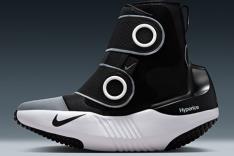
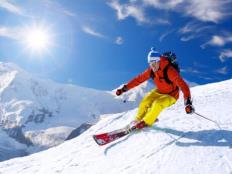
Discuss This Article